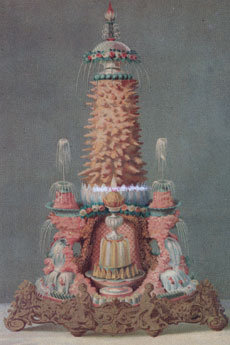Trayne Roast That Is Finished
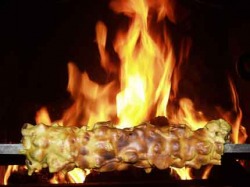
The medieval English trayne roste is a distant relative of the gâteau à la broche as shown below native to the Pyrenees, a spongy batter cake roasted in front of an open fire on a specialised spit furnished with a wooden cone. The great Second Empire chefs Urbain Dubois and Emile Bernard attempted to elevate this rather rustic gateau to the status of an elegant grosse pièce by incongruously presenting it on elaborate socles and decorating it with spun sugar ornaments. This ancient regional dish is still enthusiastically cooked throughout the Midi. However, it is nowhere near as good to eat as its ancient ancestor from Plantagenet England with its rich filling of almonds and dried fruit. Another European spit-roasted cake of considerable taste is the Baumkuchen native to Germany and Switzerland.
Trayne Necklace
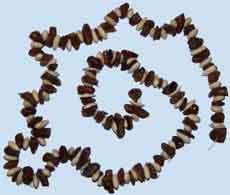
This is what the Trayne Roast should look like before you put it on the skewer to be roasted.
Beef Fillet With Herbs
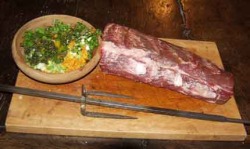
A small joint like a fillet was an ideal cut for roasting in front of the fire with a spitjack (as shown below).This example dates from the time of Robert May. It only has two sets of wheels in its train, which means that it would have needed a complex pulley system to work efficiently, making it suitable only for light domestic roasting. In order to turn large joints, the kitchen of a large house or busy inn would have needed a more substantial jack with three sets of spindles.
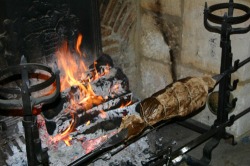
The beef fillet gently roasts in a jacket of paper.

A joint of beef starting at the fire with a heat shield of paper to protect the fat.

The fillet is usually stuffed with parsley, tyme, sweet marjoram, beets, spinage, and winter-savory, all picked and minced small, with the yolks of hard eggs mixed with some pepper, stuff it and then roast it.
